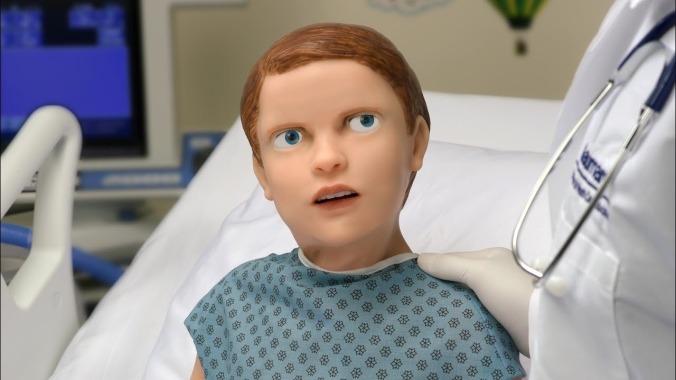We've built a robot child that can weep and bleed on command, at last

Fulfilling the grand, dystopian dreams of playwright Karel Čapek—whose 1920 work R.U.R. introduced both the word “robot,” and the concept of people being dicks to robots, to the world—science has finally delivered unto us a robot boy who can bleed and cry on command. Per Wired, Hal—which, c’mon, people, can we at least try to have a robot uprising that’s not quite so thoroughly on the nose?—wasn’t designed specifically for synthetic-targeting sadists; rather, it’s been created as an aid for medical students so that they can get used to the common medical issues of a convulsing, agonized robot boy.
Here, have some nightmare fuel:
Hal was built to suffer. He is a medical training robot, the sort of invention that emerges when one of the most stressful jobs on Earth tumbles into the uncanny valley. No longer must nurses train on lifeless mannequins. Hal can shed tears, bleed, and urinate. If you shine a light in his eyes, his pupils shrink. You can wirelessly control him to go into anaphylactic shock or cardiac arrest. You can hook him up to real hospital machines, and even jolt him with a defibrillator.

 Keep scrolling for more great stories from A.V. Club.
Keep scrolling for more great stories from A.V. Club.